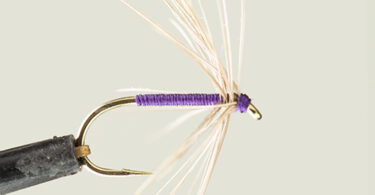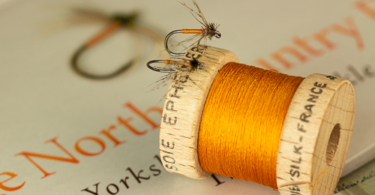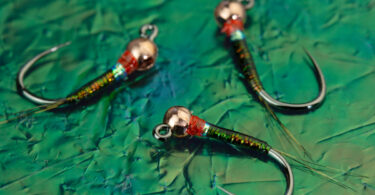
Coq de Leon feathers are a wonder to behold and once you have tied with them it is hard to go back to any other tailing material, the sparkle of the straight stiff barbs together with their shimmering translucency breaths a kind of life into your flies that few other materials can compare with. Another benefit of these feathers is that they are harvested without harming the bird and keeping the birds well is all in the best interest of the producer. Gallos de Leon is the Spanish name for these feathers, most fly tyers in the UK think of Coq de Leon as a tailing material but it’s value at the tying desk goes far beyond that.
What I found when I set out to source them for our store is that there are a huge variety of types and styles of these feathers. Obtaining the highest quality feathers was my top priority, I eventually sourced superb feathers from a single producer.
When first investigating Gallos de Leon I have to admit to being a little overwhelmed by the number of types, sizes colours and styles of these feathers. I had heard the terms Indio, Pardo colgaderas , medio and others but exactly what they were was a bit of a mystery. After some reading around, and not all internet sources are very clear on this subject I finally gained some understanding of how the feathers are classified:
There are two main breeds of Gallos de Leon known as INDIO and PARDO.
- INDIO have a steely shimmer and not speckled they exist in a range of shades.
- PARDO have a speckled nature and the speckles catch the light at different angles.
Lots of sub-types of both these two main groups exist and they are classified into named types according to their appearance.
Both these breeds produce RIHNON and COLGADERAS feathers which are grouped into Mazos or bundles of 12 feathers but this is where more confusion often occurs but it’s actually quite simple:
- RIHNON = CAPE
- COLGADERAS = SADDLE
So we have Indio Rihnon(Indio Cape), Indio Colgaderas(Indio Saddle), Pardo Rihon (Pardo Cape) and Pardo Colgaderas (Pardo Saddle). The cape feathers are considered to be superior, especially if you are wanting to do more than use them for tailing. The Rihnon (Cape) Mazos (or groups of a dozen feathers) are also graded by size the largest fetching the highest price.
After breed(Indio or Pardo), feather type (saddle or cape) and size the feathers are then grouped according to colouration and pattern. There are a great many types but some common colour terms are:
- CLARO which means light in colour
- MEDIO which is a medium Dun or medium dark colouration not a reference to size.
- OSCURO which means Dark in colour
- AVELLANADO which is a hazel reddy brown colour
- RUBION a deep red colour
And a small selection of the large number of common terms used to describe patterns which are easier to see than describe:
- Flor de Escoba

- Sarrioso

- Aconchado

There is much more to the art and knowledge of these amazing feathers than I have written here but hopefully it will help to give a useful overview of the world of Gallos de Leon. I hope to bring another article soon demonstrating some of the other uses of these feathers as practised in Spain.




